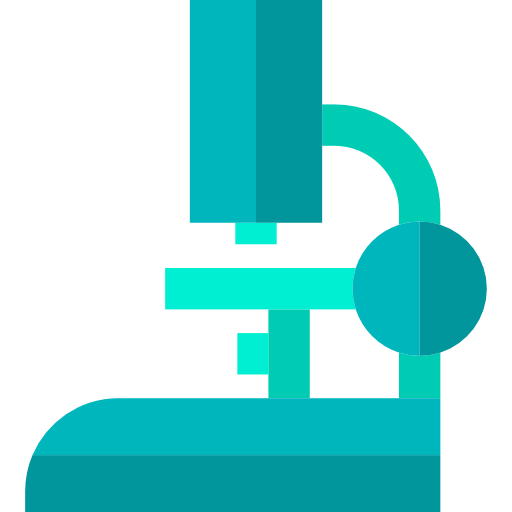ANALYTICAL R&D
Development of analytical methods, impurities research, degradation studies, trace analyses and more.
Using our analytical expertise and state-of-the-art equipment we support clients during their drug development and registration stages following the latest trends in analytical chemistry.
Development of analytical methods overview
Like any successful company, we need to be efficient, flexible and modern. That is exactly what our Research and Development department has been doing. We are a compact and innovative team of experts. In Quinta, we use state-of-the-art equipment; we follow the latest trends in analytical chemistry and also remember good old chemical processes.
Development of analytical methods
The development and testing of new analytical methods comprise the centre of our business. The most common reasons to develop analytical methods we encounter are the following:
- When developing a new (patent-protected) synthetic pathway to an active substance, it is necessary to monitor the reaction conversions and the impurity profiles of the intermediates and final products.
- The analytical method for the determination of purity or assay of the final active ingredient described in the relevant pharmacopoeia is obsolete or does not meet the requirements of the customer.
- There is no suitable method for the determination of purity or assay of the active ingredient in a new medicinal product.
- The final medicinal product is a unique combination of several active ingredients.
- There is no available method for the determination of the content of a related substance or a known impurity.
In most cases, HPLC or UPLC equipment can be used. Our laboratory is equipped with liquid chromatographs Alliance 2690/5 (Waters), Agilent 1100 and 1260 Infinity II (Agilent Technologies) and UHPLC systems Acquity UPLC (Waters) and 1290 Infinity (Agilent Technologies), mainly with DAD-UV detection. We can also use the ELSD 1290 Infinity II detector (Agilent Technologies) and a 474 (Waters) fluorescence detector.
If the HPLC/UV method is insufficiently selective or sensitive (e.g. in trace analysis), we use our LC/MS system equipped with a modern mass spectrometer with a linear ion trap LTQ (Thermo-Finnigan).
In some cases, it is still more advantageous to employ the TLC method, especially when the observed substances are difficult to detect using UV. For this purpose, we are equipped with a TLC system from the company Camag, including the Linomat 4 application device, a development chamber and a detection chamber with the Reprostar 3 digital video camera.
When developing methods for the determination of volatile analytes, we use GC/FID or GC/MS equipment, both in combination with either classic liquid (optionally PTV) or static/dynamic headspace injection. For these purpose, we use a gas chromatograph 7890A/5975C (Agilent Technologies) equipped with a CombiPAL autosampler (CTC Analytics), resp. 7697A (Agilent Technologies).
For the purpose of analysing highly polar organic substances or inorganic ions, we are equipped with a multi-purpose ion chromatograph with the option of conductive or amperometric detection ICS3000 by Dionex.
We conduct development of dissolution methods – most often using paddle dissolution systems (known as USP apparatus II) or baskets (USP apparatus I). This development is conducted as an analytical support for of the formulation development, but also for the subsequent testing in the commercial phase. For these purposes, we can use the VK7025 (VanKel) and 708DS (Agilent Technologies) systems equipped with automatic sample collection VK8000. We have recently expanded our portfolio with a dissolution system with flow-through cells (USP apparatus IV) from Sotax.
Additionally, we develop methods for the determination of elementary impurities according to ICH guideline Q3D using the ICP-MS system 7800 (Agilent) including mineralization procedures, where we use Microwave digestion system speedwave Xpert (Berghof).
In addition to these main activities, we also provide development of methods for particle size determination using microscopy with image analysis and laser diffraction (MasterSizer 3000, Malvern Instruments), titration methods with mainly potentiometric detection (Titrino-Metrohm) and dissolution methods (Varian, Hanson) with UV or HPLC end for characterization of dosage forms.
Determination of impurities and their isolation
Identification and determination of structures of impurities is a fairly common task which we have to deal with. All unknown impurities with higher content than is permitted by applicable legislature (typically 0.1%) are potential complications for customer as they can cause an undesirable interest during the registration process.
Knowledge of the structure of an unknown impurity is then often crucial in distinguishing impurities originating in the manufacturing process from impurities resulting from the subsequent degradation of the final product. The first above mentioned impurities can be controlled, for example, by adjusting the production process. Knowing the structure of an impurity of the degradation origin can, in turn, enable us to prepare its standard on the basis of toxicological data or increase the limit for its content. When determining the structure of a substance in practice, we use mass spectrometry together with either gas chromatography (GC-MS) or liquid chromatography (LC-MS). When determining the structure of volatile substances, we have had excellent results with the GC-MS system together with a single quadrupole, which, when used with EI ionization, provides sufficient information leading to the target structure. During interpretation of spectra, the digital Mass Spectral Library (NIST) can also be used successfully.
Many years of experience have demonstrated that the identification of most non-volatile organic impurities is best achieved with the LC-MS system with ESI or APCI ionization and ion trapping. The LC/MS system LTQ (Thermo-Finnigan), which we use for this purpose, is equipped with a linear ion trap that combines the advantages of a classical ion trap with the capabilities of MSn and quadrupole sensitivity. The advantage is above all the high sensitivity, data collection speed and, thanks to the orthogonal construction of the ion source, also resistance to contamination by, for example, the components of the matrix or partially by non-volatile components in the mobile phase.
If the selected LC/MS alone is not enough, we are prepared to isolate the desired impurities using the preparative liquid chromatography and provide, for example, the measurement of the required NMR spectra, which we are then able to interpret ourselves. In connection to the identification of impurities by, for example, LC/MS, we are able to isolate the given substance in larger amounts at the customer’s request. The degree of success depends on the degree of separation of the given component from the rest of the mixture, but above all on its content in the raw material. If the content is too low, we look for ways to enrich it either by suitable stress conditions or pre-separation.
Isolation can be useful when it is either difficult to directly prepare the substance or other techniques than LC/MS (for example NMR) are necessary for its identification.
For these purposes, we use either classical column chromatography or high performance separation on an automated semi-preparative modular HPLC system Waters. Using these techniques, we are able to isolate, depending on the concentration in the raw mixture and the quality of separation, the individual components in the amount of tens to hundreds of milligrams.
Synthesis and certification of reference materials
Following the previous paragraph relating to the determination of structures of impurities, there is very frequently a need to acquire the given substance as an analytical standard in sufficient quantity so that this impurity can be routinely determined in the product using appropriate methods.
Our advantage is that already during the process of identification of the structure, we often develop procedures that can be used to intentionally produce the given substance by synthesis using allowing suitable reagents to interact with for example the active ingredient, or at least to enrich it. Due to this, we can often acquire the desired substance faster than by conventional synthetic procedures, which we, however, also use in appropriate situations partly in cooperation with external synthetic laboratories.
Additional advantage is the fact that the risk of a mismatch between the originally designed structure of the impurity and its actual structure is our responsibility and this may consequently represent a significant savings of time and money for the customer. We will, of course, design and perform the certification of the given analytical standard including the full characterization of the structure, determination of potency and issuance of the analytical certificate.
Accelerated stability and degradation studies
Part of validations of most HPLC methods for the determination of the content of impurities the so-called degradation study (FDS – Forced Degradation Study). FDS is an instrument for evaluation of analytical methods that aspire for the term “stability-inducing”. The principle of FDS is the exposure of the active ingredient, resp. of the medicinal product (and associated placebo) to a series of physical and chemical stresses that can, in a short-term, generate new unknown impurities that may possibly occur in the final product during storage. The physical and chemical stresses include especially:
- Exposure to heat
- Exposure to light (UV/VIS)
- Acidic, alkaline and oxidizing stresses
- Exposure to elevated temperatures and humidity of the environment
It is beneficial, for chemical stresses in particular, to choose the optimum conditions based on a good knowledge of the chemical behavior of the studied active ingredient. Eventual interactions of the active ingredient with the excipients are studied separately within the so-called compatibility studies. Experience has shown that this type of work is best handled by the R&D sections, which conduct accelerated stability, degradation and compatibility studies as a routine part of the development of new analytical methods, but also as a support of the formulation development of the given medicinal product.
Trace analyses using GC/MS and LC/MS
We have extensive experience in the development of methods for determining trace amounts of monitored impurities. For clients we usually develop methods for the determination of toxic impurities at levels many times lower than required by the relevant regulatory authorities. Although these analytes are often reactive and often in an unfavorable combination with a poorly soluble or reactive matrix, we have always reached the required detection limit.
For these purposes, we most often use LC/MS on systems consisting of HPLC 2690 or UHPLC Acquity (both Waters) LTQ mass spectrometer (Thermo-Finnigan) or GC/MS on a 7890A/5975C system (Agilent Technologies).
On all of these instruments we normally achieve quantification limits in ppm, which is usually quite sufficient for pharmaceutical purposes. If necessary we also use other instrumentation from several LC/MS systems equipped with mass and spectrometers with triple quadrupole or HR-MS system OrbiTrap (Thermo).
Additional Services

API SOLUTIONS
Proudly based in Central Europe, with partners in the EU, US and Asia, Quinta has 250 experienced in-house professionals ready to support your projects.

NITROSAMINES ANALYSIS
Based on isotopically labeled standards, our customizable in-house detection methods are available immediately.

MONITORING OF STUDIES
Oversight of participant health and correctness of treatments during clinical studies.

PHARMACOVIGILANCE
Monitoring of daily routine to detect unrecognized adverse events, plus assess and ensure drug safety.
MODULE 3 AUDIT
Thorough dossier M3 data audit to ensure consistency and compliance with regulatory requirements.

IMPD COMPILATION
As an EU based company we are well-placed to help create & develop your IMPD.

AND MUCH MORE
It’s not an exhaustive list so if you don’t see what you need, contact us.
Questions?
Our Sales team is happy to help: sales@quinta.cz
Questions?
Please use the contact details or form below.
quinta@quinta.cz
+420 242 454 311




